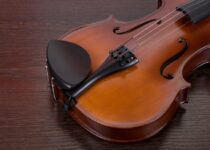Mandolin Tips
This is not a comprehensive guide for beginners. Based on the various faqs I got over these years while beginning Mandolin journey, i have compiled the list
Mandolin holding
You should balance your mandolin so that it doesn’t take too much effort to reach the notes. Your right hand should have the freedom to pick and strumming as you need.
The main balance points of the mandolin are the left-hand thumb which directs the neck upward; the diaphragm which acts as the central stabilizer; the spot just below your right elbow which anchors the instrument and allows for movement of the elbow and wrist needed to pick and strumming; and the area just below the inner edge of the right elbow which serves as an anchor.
Use a pick
After you have balanced your mandolin you will need to create a functional picking method. Place your index finger on the pick and curl it. Your thumb should be flattened against the pick’s face. The thumb’s bottom and the flat bottom of the index finger should be parallel to one another.
To strumming chords, a looser grip is better to allow the pick glide across each string smoothly. To play single notes, you will need to have a firm grip in order to drive through every doubled string. This will produce a richer tone.
Be Accurate
The mandolin’s four sets of doubled string have more pressure than most guitars and ukuleles. However, quality tone is not about strength but accuracy.
You want to ensure that every doubled string sounds properly. To do this, place the string as close as you can to the fretwire. You hear the pitch of each doubled string by contacting the fretwire. This shortens the vibrating string’s reach to that point, so it is important to use left-hand accuracy.
You can check this book to have an absolute guide to start your Mandolin journey
High Quality Tone
You now know how to use both the pick and your left hand. It’s time to put everything together. This means learning how to use the pick on open strings, including string skipping, and how to incorporate fretted notes with scales or simple tunes.
Before adding fretted notes, you’ll need practice driving through each doubled strings with both upstrokes and downstrokes. Next, you will need to practice ascending and decrescending the first five notes on the G major scale using alternate picking. The following are the fret numbers: (4th string, G) 0, 2, 4, 5, 6.
After you are able to play the ascending and declining portion of the major scale on the G string, you can try the two-octave, which uses all four strings. Remember to use your fourth finger.



